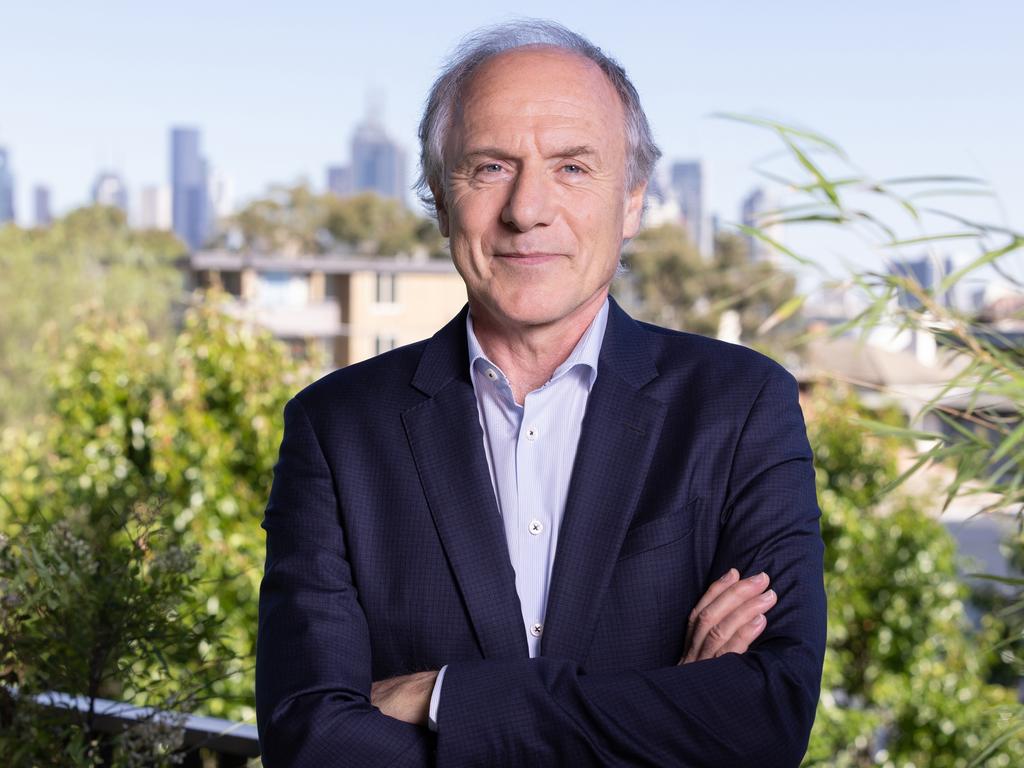Cost of living crisis at risk from subsidies to industries and hidden industry protectionism
The Productivity Commission raises questions about the ‘complex structure’ of climate change measures.

The cost-of-living crisis is at risk of being inflamed by massive industry subsidies in favoured and unproductive sectors, with the Productivity Commission warning against Australia engaging in “hidden” protectionist policy that could wind back the nation’s living standards.
A report by the independent body also raised questions about the “complex structure” of climate change measures and whether they are reducing emissions at the lowest cost, citing the fringe benefit tax exemption on electric vehicles as having an estimated indirect carbon price of almost $1000 a tonne.
Warning of an emerging “behind the borders” trade war amid global strategic competition, the commission said future industry subsidies such as the Albanese government’s $15bn National Reconstruction Fund, critical minerals and national battery strategies were potential steps in a protectionist direction.
But Australia stood to potentially lose its comparative advantage if it sought to compete on a protectionist level with the US and Europe by going too far in the direction of self-reliance and domestic production through large-scale industry assistance programs.
Releasing its annual Trade and Assistance Review Thursday, the Productivity Commission revealed assistance to Australian industry, quantified as government support for Australian businesses, rose $460m to $13.8bn in 2021-22. This period covered the former Coalition government’s time in office with the report also highlighting specific Covid legacy programs including the HomeBuilder scheme which continued beyond the pandemic.
It said industry assistance through concessional finance, including carbon abatement policies, had become increasingly “opaque” and called for greater transparency on the use of taxpayer funds.
The report also took aim at the existing and “convoluted” tariff system that remained on 10 per cent of goods that was imposing nuisance compliance costs on importers and which were being passed on to consumers in an inflationary environment.
It said the trend towards replacing the old tariff system with “behind the border” industry assistance in the form of concessional finance was due to grow further with the National Reconstruction Fund expected to begin operation in 2023.
It warned there was the potential for Australia to follow the path of protectionist industry assistance policies that could have a negative economic effect.
“The world’s largest economies are increasingly engaged in policies to favour selected domestic industries through subsidies, local content rules and trade barriers,” the commission’s deputy chair Alex Robson said.
“In many cases this is simply a form of old-fashioned protectionism. As a small, open economy, our future prosperity depends on global economic integration and low trade barriers.
“It is unlikely to be in Australia’s interests to try and compete in a protectionist contest via large-scale industry assistance.”
Dr Robson said while traditional industry assistance had taken the form of tariffs, the latest TAR review by the commission revealed most assistance now came from tax concessions and government spending.
“After more than 60 years of falling trade barriers and increasing global economic integration, industry policy and trade protectionism are back on the rise,” the report said.
“The shift is being driven by a resurgence in strategic competition between the major economies, public memory of Covid-19-related supply chain disruptions, and national positioning to benefit from the global clean energy transition.
“This is particularly apparent in the world’s major economies, with the passage of the US Inflation Reduction Act and the CHIPS and Science Act in 2022, and the release of the draft EU Net Zero Industry Act and CHIPS Act in 2023 – each jostling to capture market share in favoured sectors.
“Some have called for Australia to follow suit. The development of Australia’s Critical Minerals Strategy, Hydrogen Headstart Program, National Reconstruction Fund, and National Battery Strategy, constitute steps in this direction.”
The report went on to say: “Industry assistance in Australia and overseas no longer principally takes the form of the ‘at the border’ quotas and tariffs as it has in decades past.
“Industry assistance is increasingly implemented in less visible forms ‘behind the border’ – subsidies, tax concessions, tax credits, budget spending on favoured sectors, concessional finance, domestic reservation policies, and local content rules. Collectively, these measures risk winding back some of the gains in living standards of recent decades, by encouraging countries to direct their scarce national resources towards sectors that are not a natural fit for their economies.”
The annual report flagged the inclusion of concessional finance and climate change in its future monitoring of industry assistance, but it makes no judgment about specific policies. However, it raises concerns about the existing system and the potential impact on cost of living.
“Combined industry assistance was estimated at $13.8 billion (in nominal terms) in 2021-22, $460 million more than in 2020-21,” the report said. “Budgetary assistance accounted for the vast majority of this assistance.
“The protectionist impact of what remains of Australia’s tariff regime is now principally due to the complexity of the tariff system itself, with the costs of navigating the system for business estimated to be between $1.2 billion and $3.6 billion, for the government to collect $1.8 billion in tariff revenue.
“The system thus represents a complex labyrinth of protection, favouring some domestic producers as imports are artificially more expensive, an unnecessary source of costs to Australian businesses, and an additional cost of living burden for Australian households.”
The report said the move to domestic production self-reliance had associated risks.
“Each dollar spent on subsidising domestic production capacity in non-comparative advantage sectors is a dollar taken away from sectors in which we enjoy a comparative advantage,” it said. “This trade-off is particularly binding in a near full employment economy where the redirection of labour towards one sector inevitably comes at the expense of another.
“Eschewing international trade ties and increasing reliance on domestic production capacity comes with its own risks.
By contrast, continuing to focus on our comparative advantage is likely to build a broader and more enduring form of resilience – providing the high-income levels that can help deal with, and manage the fallout from, any unforeseen supply chain issues that might arise in the future.”
The report questioned whether the current policy approach to climate change could be regarded as large-scale industry assistance.
“Pursuing Australian emissions reduction goals in the absence of an explicit economy-wide carbon pricing scheme has led to a proliferation of piecemeal sectoral abatement policies,” it said.
“Many of these abatement measures appear to possess some of the characteristics of more conventional forms of industry assistance.
“Ideally, estimating the industry assistance value of these policies would account for the extent to which they act to indirectly price greenhouse gas emissions.
“The greater the fiscal cost per tonne of emissions reductions, the greater the likelihood the policy will act more as a form industry assistance than a cost-effective means of credibly contributing to Australian emissions reduction goals.”








To join the conversation, please log in. Don't have an account? Register
Join the conversation, you are commenting as Logout